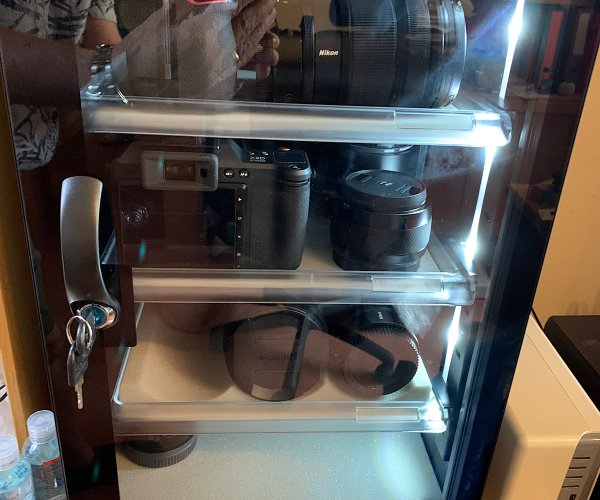Anyone ever thought of installing a UV light fixture in your storage area to combat fungus? Would this even work?
Well, I am not a biologist, just and old engineer, but having worked in the food industry and dealing with hygenic issues in filling and packaging plants from time rto time, I can say that UV light is not able to kill everything. You can achieve decontamination of material surfaces with (e.g. plastic foils going in to blow molding of yoghurt cups), or reduce the bacteriological load of water (e.g. devices used with aquariums or household decontamination devices for critical water supplies), and such alike.
But especially fungal spurs are - if you like - "designed" for durability and thus not so easy to get rid of. In many cases the only thing you can do is to avoid their presence, e.g. by filtering the air going into a room or you just have to live with their presence and all you can do is to avoid providing the conditions for them to "become alive". That's where the rules come from for people dealing with fungus risk in old houses.
As we are carrying our gear right in the heart of mother nature the latter is most likely the only option, but the good news is, that it works.
My camera gear has spent a lot of time in a folwer shop with dust, humidity, fungus ... you name it. I sometimes spent hours in this environment taking photos, using external zooms pumping air in and out, changing lenses, ... I also did documentary photos in a building that had to be renovated because of a fungus problem in the wooden construction and I had to wear a mask myself, ... and nothing happened to my gear.
Not a single lens or camera with fungus. All I did was keeping the gear dry from tthe outside and store it in an open case or backpack in a room being reasonably warm, with a normal humidity that also is considered to suit our health and not too much sudden variation in the climate. In extreme cases I also clean the gear from the outside with normal compressed air, which works much better than trying to wipe the surface (Just the pressure should be reduced compared to normal workshop scenarios)
That said, admittedly I have no experience with tropical climate so far - at least not in conjunction with using digital camera gear.


